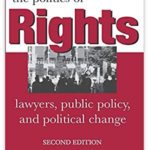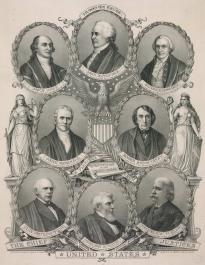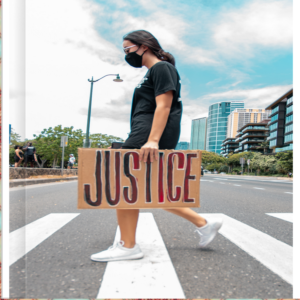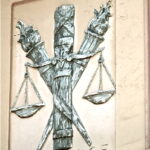Welcome
This class is about Judges.
Some questions to guide us through the course are: How do judges make decisions? What training and education do they receive? Who gets to be a judge? What is the job of a judge within a complicated court system? How do judges fit within a shared governance of democratic society?
What do you already know about the Judiciary?
Click here to complete this required Google Form.
What are your expectations in college?
Diagnostic: Click here for reading and then after you read the article click here for the Google Form.
Next if you are a criminal justice student or are interested in becoming one please complete this brief CRJ Interest Survey. Click here
Introduction to the Course Work: Getting Started.
Last semester students conducted this first part of this public legal education project. Those students chose a topic they thought the general public would be interested in. They then presented their topic in the form of a “hybrid-zine” or a cross between a traditional assigment, like powerpoint, short summary, or info-graphic, and a more creative attempt like a zine, a poem or lyric, a short audio or video file, or a visual representation, or cartoon strip.
We now want to move on to part two of this Zine project. You will review their work in this class and then complete your contribution in two parts: 1) Part one will be a “Message to a Judge on behalf of the People of ______” and should be in one page letter format. An example is here. 2) Part two will be a creative representation from this list above and must include a symbol that you choose or one that you design yourself. I have provided three examples below.
Your assignment will NOT be a powerpoint or other traditional format. You may write a three page essay to go along with your project stating what you learned about legal reasoning and why that would be helpful to ordinary folks for extra credit however.


How can I prepare now for the Final Exam?
Final Exam Worksheet: https://drive.google.com/file/d/1q69spmoJVW74xUABgwxc7YLZ7iO2VMW5/view?usp=sharing

You may also want to purchase this optional but recommended book. I will be referring to it in a few video lectures and it provides a lot of background information that might be useful to you. It is not required and you can certainly pass the class without purchasing it. For students interested in law, social justice, or the legal system it is a common reading.
Part 1: Everyday Interpretations of Legal Reasoning.

The first past of this course consists of you getting a clearer idea of how the courts participate in democratic decision-making. You will need to see this from multiple points of view and try to consider how the judiciary influences people’s day-to-day activities. In the first reading, you should think about what the theory, “separation of powers,” means to you. In the second reading, you need to think
about how people use “rules” to limit conflict and to set guidelines for future behvavior. In the third reading you need to consider some of the misconceptions you might be bringing into the classroom based on knowledge you gained through popular culture. While these ideas that you form from family, friends, t.v., and social media are not “wrong” the ideas are usually somewhat naive and fail to get into the complexity of the facts in real life. Usually these ideas are far too optimistic and ideal expectations about human behavior. Finally, you need to think about law as the right to resistance and the limits of formal or official law. Police, as representaives of the state, do not hold absolute power, although many seem to think they do. In some cultural traditions police are the last word (think Judge Dred) but in the U.S. the police have a history based in slave patrols, protecting the property of the rich, and more recently of selectively enforcing only some of the laws mostly against minoroties. When movements have succeeded in balancing these inequities police have been used to focus on crimes of the rich, serious offenses of the majority population, and even as peaceful conflict resolvers in community policing practices. Each of these readings should deepend your point of view and help you see multiple perspectives from non-lawyers as to how the law works in real life.
- Journalism: Frivilous Claims and the Separation of Powers: Click me
- Legal Scholar: Basketball in the Key of Law: click here to download PDF reading
- Legal Scholar: CSI Science as Wishful Thinking: click here to download PDF reading
- Legal Scholar: Black Lives Matters. Click here for the reading.
Test: When you are ready, but no later than January 14th, Take this Test on the 4 readings. Click here to take the test.
Reading Response Review: click here
Getting Ready for Part 2: Watch this video lecture below and then take the quiz: click here to take the quiz.
Part 2: Student Understandings of Rights, Legal Issues, and Problems in Law and Society.
On the Nature of Judging, Justice Benjamin Cardozo said, ” History or custom or social utility or some

compelling sense of justice or sometimes perhaps a semi-intuitive apprehension of the pervading spirit of our law must come to the rescue of the anxious judge and tell him where to go.”
In this section we want to think about: What is the significance of multiple views about what justice/injustice is?
Watch this Video Lecture: Historical Injustices:
And then complete this A4 quiz: click here to take the quiz.

Next
Review these zines: click here to view student work
Review these student questions and comments: Click here to view student feedback.
To complete Assignment 5 below you must have reviewed the student work above.
A5: Zine Legal Language 1: click to complete
Assignment: Apply readings to the student zines. Click here to complete.
Video Lecture: Radical Republicans, Legacy of Slavery, Rights Consciousness, and the Future of Legal Thinking.
Part 3: Learning Legal Language and Thinking Like a Judge.
Read Blackstone’s Commentaries. Click here for the reading.
Review the Judiciary Act. Click here for the reading.
Judge Downing: Click here for the reading.
John C. Coughenour: Click here for the reading.
Floyd v. New York Summary: Click here fore the reading.
Exam: Use abduction worksheet – click me for worksheet
Then complete this form: click here
Email me your Zine project.
Complete the Final Exam
Grading.
Zine: 40%
Exam: 10%
Test: 30%
Assignment: 20%
Extra Credit: 10% – Create a Zine or Handout for Pol 63 Introduction to Criminal Justice Students about Courts (Actors, Roles, and Responsibilies). See Washington State Courts for examples: https://www.courts.wa.gov/newsinfo/index.cfm?fa=newsinfo.displayContent&theFile=content/ResourcesPubsReports






